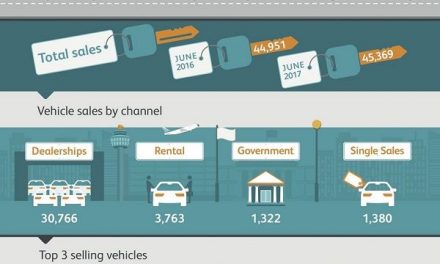
Energy for small buildings
The goods shed at Agra’s Otjiwarongo branch houses the first solar installation for small commercial applications.Infrastructure investment amortised over 5 years
A non-descript warehouse in a rural town serves as base for a solar installation that paves the way for energy independence for similar structures. Agra took the first step to make use of alternative energy, with the installation of solar panels at their Otjiwarongo branch. Covering the roof of the goods shed, this solar plant is designed to provide all buildings on the branch premises with roughly three quarters of total energy required.
Agra appointed HopSol Africa to supply and install this turnkey project of a 55.6kWp grid-connected solar power plant. “HopSol’s technical approach and experience in the installation of solar power in desert regions convinced Agra to make use of them as their supplier of choice” the agribusiness said in a statement announcing the inauguration of the new solar plant. It is estimated that this solar power installation will produce about 110,000 kWh per annum and that it would thus supply about 70% of the electricity demand of Agra Otjiwarongo.
All such installations require prior approval from the regional electricity distribution company, in this case Cenored.
Agra said since it believes in and wishes to encourage the use of alternative energy, it is finalising a partnership agreement with HopSol that will then enable Agra to act as an agent for HopSol products.
HopSol works with CIS Thin Film Technology from Solar Frontier. These solar modules have a very low temperature coefficient and can withstand and handle the local daily heat and radiation significantly better than any other solar modules. Compared to mono- and polycrystalline solar modules, these panels provide up to 15% more electricity (kWh) out of the same installed capacity. Another advantage of the CIS Thin film Modules is the fact that they do not necessarily need to be installed in the optimal angle to the sun.
Explaining the economics behind their pilot installation, Agra said it is expected that electricity tariffs will rise much faster than the inflation rate. Assuming that this trend will continue for the foreseeable future, it makes sense to look for an alternative source for the supply of electricity to contain this important operational cost component. Considering various factors, it is anticipated that this investment will pay for itself within 5 to 6 years, and as the solar modules have a 25 year warranty, a minimum of 20 years of free electricity can be achieved.
“We are very pleased with this investment and excited to see what difference it will make,” said Henning Tiemann, Senior Manager: Properties and Business Development at Agra and added: “It will not only save Agra money in the long term, but it contributes positively to the environment by reducing our carbon footprint.”











































